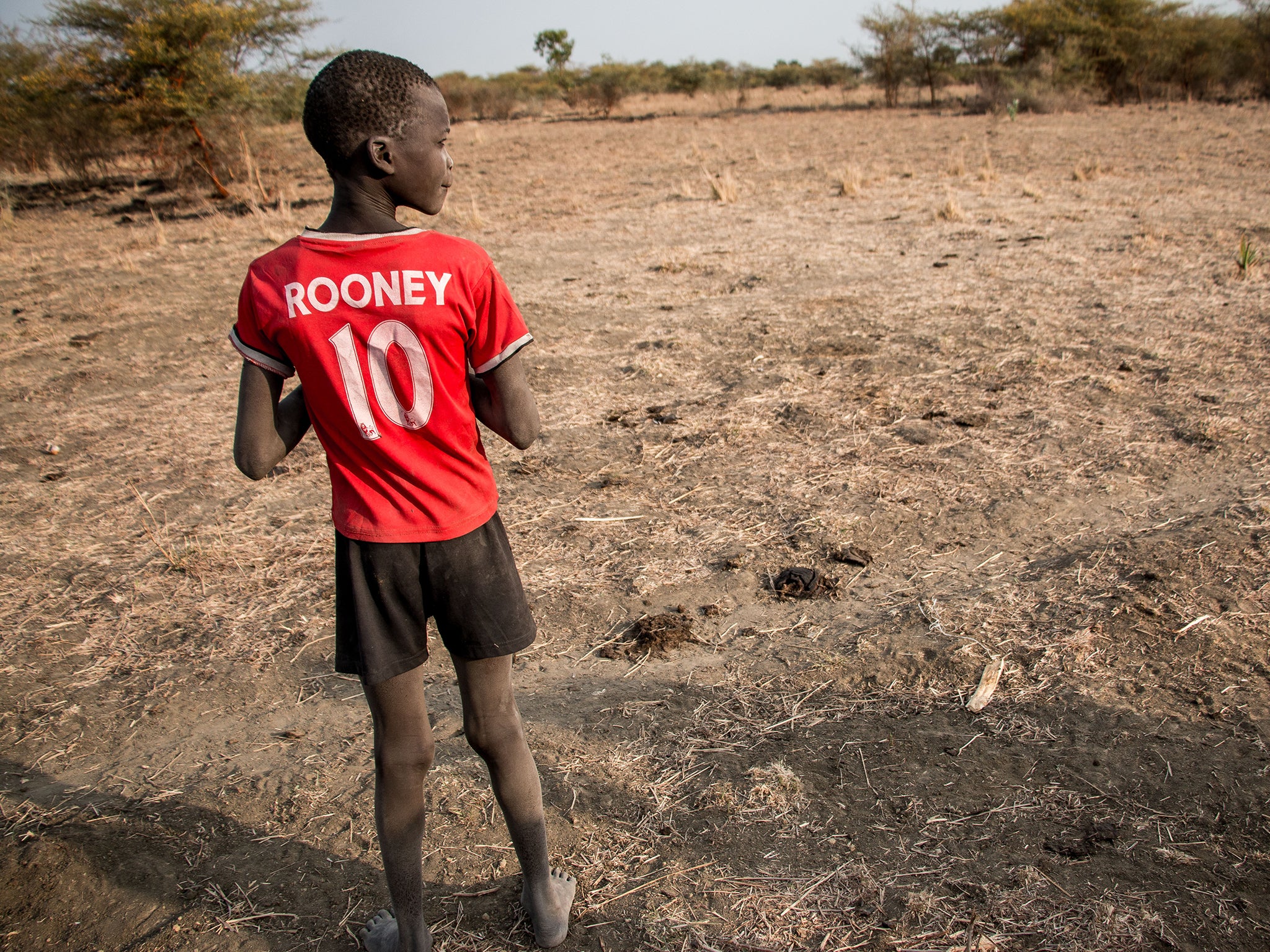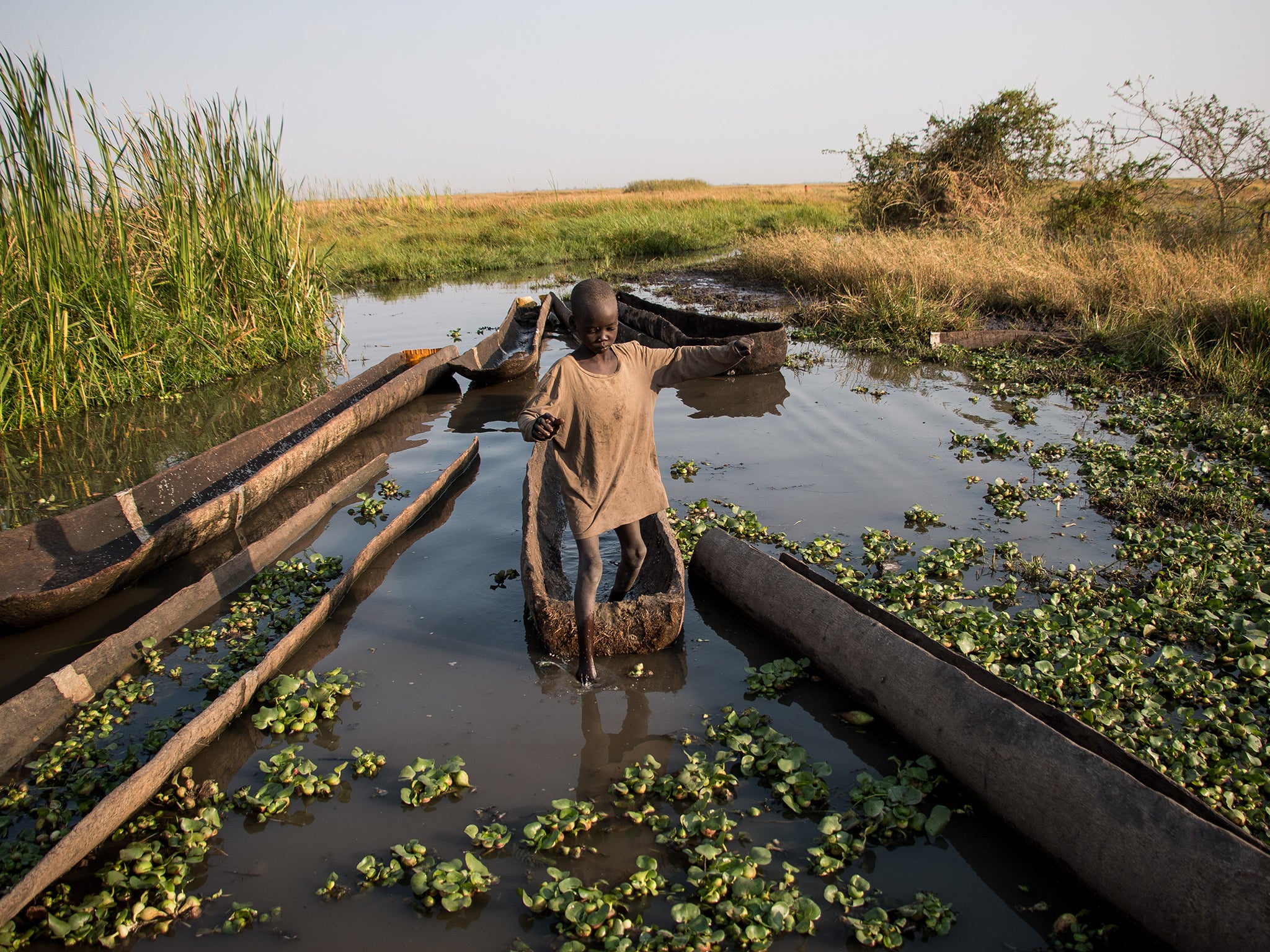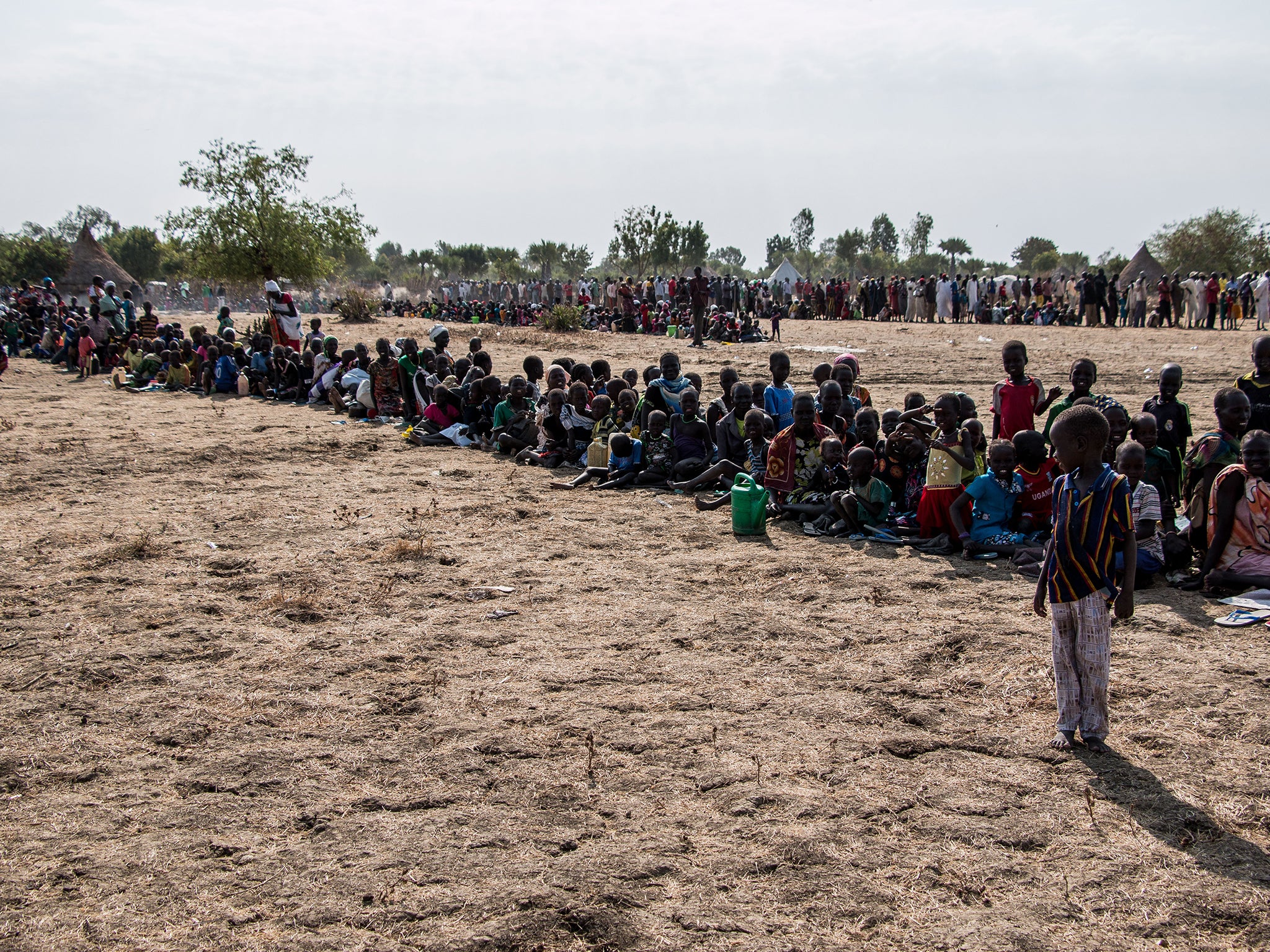South Sudan: Inside the world's newest country – where starvation stalks 3 million people
The UN drops food from planes into a land decimated by a two-year bloody conflict that is destroying its oil rich future. But this won't be enough to pull it back from the brink of a humanitarian emergency. In his first of three special reports, James Cusick reports from Nyal

Your support helps us to tell the story
From reproductive rights to climate change to Big Tech, The Independent is on the ground when the story is developing. Whether it's investigating the financials of Elon Musk's pro-Trump PAC or producing our latest documentary, 'The A Word', which shines a light on the American women fighting for reproductive rights, we know how important it is to parse out the facts from the messaging.
At such a critical moment in US history, we need reporters on the ground. Your donation allows us to keep sending journalists to speak to both sides of the story.
The Independent is trusted by Americans across the entire political spectrum. And unlike many other quality news outlets, we choose not to lock Americans out of our reporting and analysis with paywalls. We believe quality journalism should be available to everyone, paid for by those who can afford it.
Your support makes all the difference.His red football shirt is a slim association with a distant rich land. In the town of Nyal, in war-torn Unity state of South Sudan, similar thread-bare football shirts, bearing famous names, are seen on the backs of toddlers, teenagers and young men. But this young ‘Rooney’, if he can be called that, and others in the world’s youngest country, are different from other fans across the globe. He is one of 40,000 people facing a catastrophic famine that the United Nations believe has already begun.
Over two recent days, the holds of mammoth low-flying cargo jets belonging to the UN’s food relief agency, the World Food Programme (WFP), emptied over the skies of Nyal. The bags of the staple grain, sorghum, along with pulses, vegetable oil, blends of corn soya and specialist supplements for young children and women suffering from severe malnutrition, were intended to keep the town and its neighbouring villages fed for a month.
It won’t be enough. The last air drop was in November. That was also intended to last four weeks. So every grain from any damaged bag is collected, swept together, carefully re-packed.

Analysis by the UN estimates that 2.8 million people are currently facing "acute" food and nutrition insecurity in South Sudan’s Greater Upper Nile states, including Unity. A two-year bloody conflict between mainly Dinka and Nuer groups, allied to warring government and opposition forces, and now spreading into other inter-ethnic struggles, is destroying the country’s once potentially oil-rich future. Only help from 140 NGOs, including a substantial input from Oxfam and other international aid agencies, is preventing a wider suffering.
One UN report says there is "overwhelming evidence" of a humanitarian emergency in four Unity counties where communities are already using "severe coping strategies" not seen since the conflict began.
A famine in all but name
The UN were reluctant to designate an official "famine" in South Sudan last year. This year that will soon change. A report waiting for authorisation from New York will say hell is already here.
Off Nyal’s wide main dirt road, where he holds "evidence-gathering" seminars in a dark hut with local volunteers, Francis Mauna, from Sierra Leone, who works for the "cluster" of organisations involved in food aid, says figures from last year have been re-evaluated.
"People are dying and the situation is bad," he says. He knows his words underplay the problem.
Hunger is driving a range of behaviors usually not recorded here. "Families are running out of options," according to Jonathan Veitch, the Unicef representative in South Sudan.
Driven by desparation
The skin of cattle is being eaten; undigested food in slaughtered cattle’s stomachs is being removed and "squeezed" to create beef-smelling stock; the killing and eating of birds and animals, not usually hunted, is increasing. Those with no money are selling everything. Families who fled into the adjacent vast Sudd swamp to hide from marauding soldiers, are now living in fishing camps on small outcrops of land. Mauna’s list keeps getting longer.
These unusual patterns are indicators that a humanitarian emergency has become a humanitarian catastrophe, with malnutrition levels and mortality rates already bordering "famine".
People living on the so-called "highlands" of the Sudd swamp travel on thin canoes for days to register for food. The WFP also have evidence that children under 10, travelling on their own, walked over 120 miles over days to leave government-control locations for the thin security of Nuer-controlled Nyal.

Small children make mud models of their home. They shape dirt into circles of traditional tukul huts, make aircraft from twigs and drop tiny mud balls from the air. Food, they believe, isn’t grown, but comes from the sky.
A queue of 40,000
The marked red, white and blue aid bags from the air drops are piled together at the edge of Nyal near the drop zone. The bags were in full view last week when 40,000 people queued in soaring temperatures that passed 90 degrees. They endured three, four-hour waits at five locations where the WFP counted, registered, and then finally distributed life-saving rations.
The process was scheduled for three days. It started with long lines of women sitting with their young children, alongside separate queues for men. The lines radiated out from the stick and mud hut compounds at the edge of the town, into searing open-field heat. That there was no mass riot seems remarkable. Hunger has its own built-in patience. Only fish sold daily from catches in the swamp is preventing widespread starvation. But when the water-level falls?

A gunfight near the market stalls the registration. A soldier is killed, another man is wounded. Shots are fired across the empty-of-food market as the killer successfully escapes. The reasons offered are conflicting. In a place where AK-74 rifles are carried by youth militias as a badge of open intent and local homeland security, "incidents" are expected.
'Rooney' is just one face among nearly 25 per cent of South Sudan’s population who are in urgent need of food aid. Just over 6 million require basic humanitarian help. The UN’s Office for the Coordination of Humanitarian Affairs (OCHA) estimates the crisis needs $1.3 billion for the coming year.
Killings, rapes, abductions
Unity is the worst hit state in the brutal ethnically-driven civil war that erupted not long after South Sudan won its independence from Sudan in 2011. Nyal in Panyijiar province is at the epicentre of the horrors that have included, according to a recent UN Human Rights report, indiscriminate civilian killings, rape, abductions, the forced conscription of children, stolen cattle, looting, and the burning of entire villages including crops.
"The conflict" inhabits all conversation, magnifing everything from long-established tensions between Dinka and Nuer people, to smaller village and local wars. Since the country began ripping itself apart, 2.3 million people, one in five of the population, have been forced from their homes. The International Crisis Group estimates 100,000 people, possibly more, have been killed. It is rare for any family to have escaped tragedy.
Although 185,000 people have sought refuge in UN-designated protection camps, some 90 per cent of those displaced, remain on the run, hiding from the on-going violence.
'The place I worked no longer exists'
In Francis Mauna’s group the stories are harrowing. John Chuol, a former school teacher, canoed for three days through the Sudd swamp to reach Nyal. Godfry Gat Luak Dak walked from Juba, the capital, to Nyal. It took him 2 months. Out of a group of 30 trying to make the same journey, he was the only one who made it. The rest, he claims, were shot by government forces along the way. Elijah Puot offers a dark description of his former life. "The place I worked no longer exists." Opposition forces have also been accused of atrocities.
A peace agreement signed last August between President Salva Kiir, and his exiled former vice-president, Dr Riek Machar - who was accused of mounting a coup attempt in December 2013 - offered hope that the war would end. But promises to form a unity government were undermined by a unexpected plan submitted by Kiir to nearly triple the number of states from 10 to 28.
While international diplomats pressure and threaten sanctions on both Kiir and Machar, demanding compromise and fast-tracked peace, the WFP fear 2016’s $1.3 billion humanitarian budget will be severely eroded unless they successfully store food in key areas before the wet-season closes in. Then the 15-day drive along the "western corridor" of dirt-track roads between Juba in the south, Wau in the west, and Bentui in northern Unity, will become impassable as it turns into a sea of mud.
In a country almost the size of France, there is only 100 kilometres of tarmac road.
No way through for food
Dr Joyce Kanyangwa Luma is WFP’s director in South Sudan. Her organisation has less than 12 weeks to do the impossible. With the 2015/16 harvest non-existent, and nothing being planted because of the conflict, all of South Sudan’s food has to brought in from neighbouring states. Some 800 full trucks a month are needed to "preposition" food that will help South Sudan through the so-called "hunger gap" which begins in April or May.
But violent attacks and looting of the trucks mean the corridor is currently too dangerous to risk. A tenth of the traffic needed is setting off, guarded by UN Blue Helmet forces. Dr Luma said: "Rising insecurity in Greater Equatoria [the state west of Juba] is hampering delivery of humanitarian aid through major routes." The government appears to have little control over the growing incidences of banditry, with WFP unwilling to risk the lives of staff and workers.
Large barges could use the Nile from Juba. WFP once had access to five which carried 10 times what an aircraft can drop. But owned by private contractors, the Nile is now simply too high a risk, too dangerous, with barges being confiscated by the government or simply attacked.
If prepositioning fails, the vast cost of using air drops will require a recalibrated larger budget – and that is seen as unlikely to happen. The world has seen African famines before and reacted. But this time there is competition, with Syria’s crisis currently dominating international attention amid fears that donors may already be fatigued by this endless, unresolved war.
For ‘Rooney’, everything in the opening months of 2016 appear to working against him. There is no winning or losing season for him. To simply be alive for another season would be a triumph.
Visit Oxfam's website to find out more about its response to the crisis in South Sudan
Join our commenting forum
Join thought-provoking conversations, follow other Independent readers and see their replies
Comments